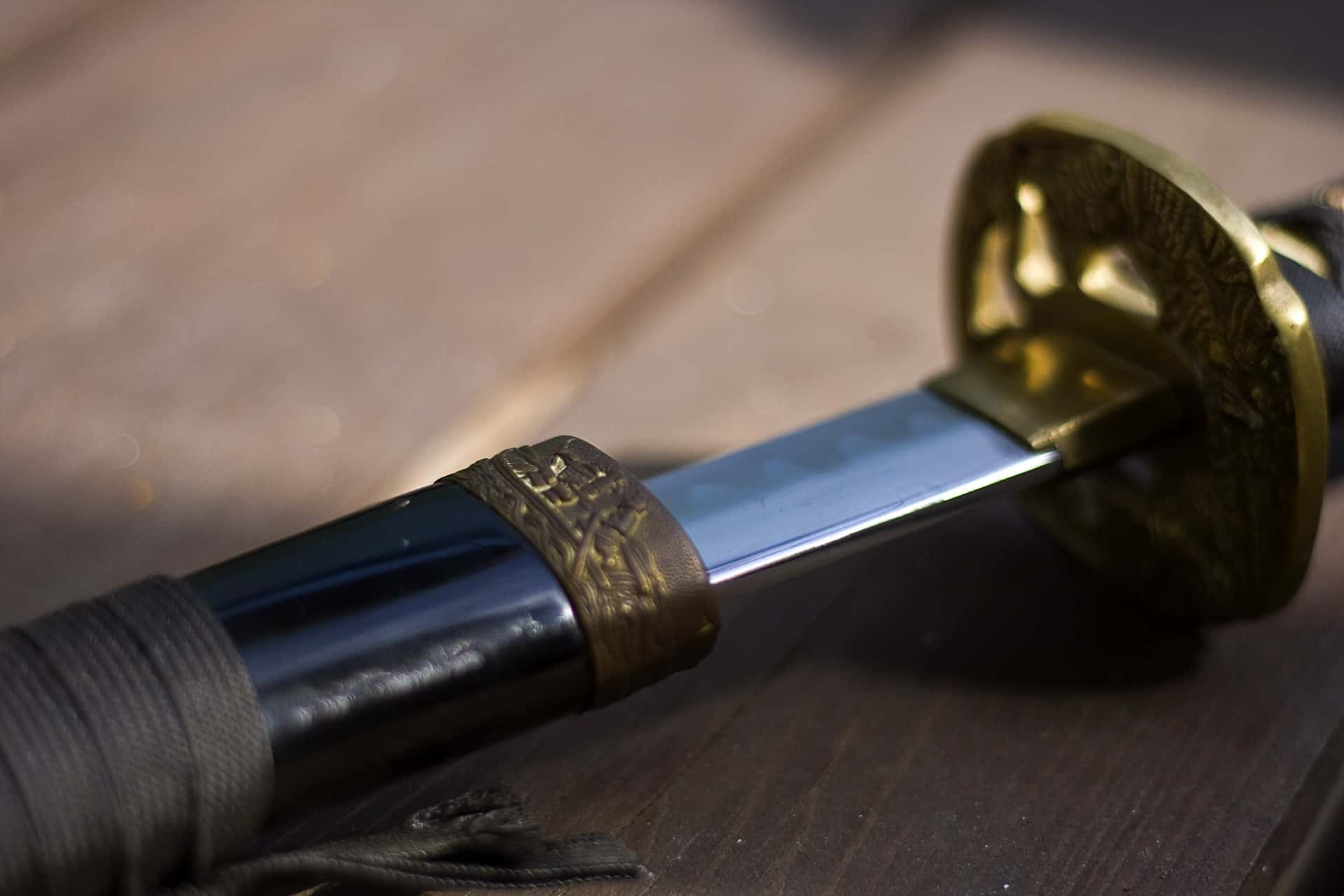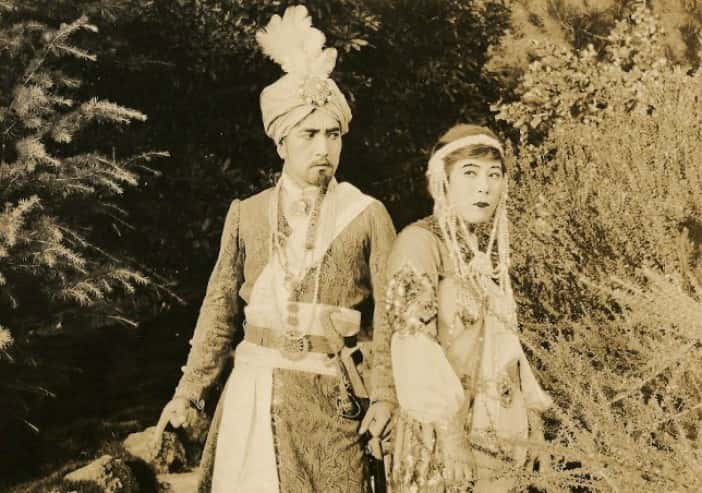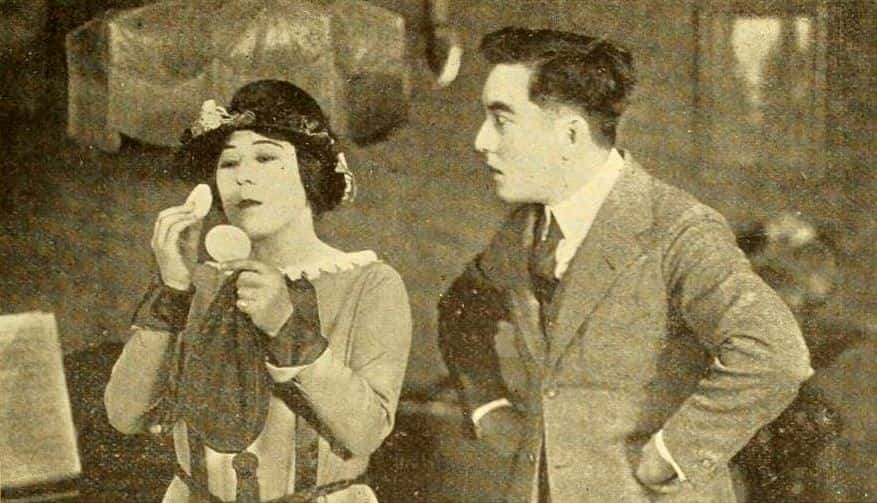Before there was Rudolph Valentino, there was Sessue Hayakawa. Women raved over him, men wanted to be him, and the camera adored him. But behind his sensational allure, the Japanese silent film star hid more than a few Hollywood demons. From his wild personal life to his dark past, the secrets of this forgotten legend are finally out.
Sessue Hayakawa Facts
1. His Family Had Impossible Expectations
Sessue Hayakawa was born with immense expectations on his shoulders. Born in June 10, 1889 (or 1886, according to some sources) as Kintaro Hayakawa, he seemed destined for the sea, not stardom. His father was the wealthy leader of a fisherman’s union in Japan, and his family wanted the young boy to become an officer in the Imperial Navy. Unfortunately, a tragedy got in the way.
2. He Suffered A Crushing Tragedy
Hayakawa wanted nothing more than to please his parents and bring his family honor, and he enroled in the naval academy as soon as he could. His excitement quickly turned to bitter disappointment. One day while diving to the bottom of a lagoon, he ruptured his eardrum and subsequently failed the necessary physical. Just like that, his dreams were over…and deep troubles began.
3. His Father Was Ashamed Of Him
Failing the physical also meant that Hayakawa failed his traditional family, bringing shame to their doorstep even though it was an unforeseeable accident. His relationship to his father became especially strained and distant, and they would never entirely repair it. In response, Hayakawa was driven to a drastic, terrifying act.
4. He Tried To Take His Own Life
In a display of angst, the 18-year-old Hayakawa saw no other choice but to end his life in seppuku, the Japanese ritual for honorable suicide. One night, he locked his dog out of the family shed, then proceeded to stab himself 30 times in the abdomen, as in the way of the samurai. Only the dog’s barks alerted Hayakawa’s parents and saved his life.
5. He Had A Violent Temper
After this teenage despair, Hayakawa claims that his parents quickly gave him a new dream—become a banker—and shipped him off to America to study at the University of Chicago. Well, that’s not what happened. Hayakawa said that instead of throwing himself into his studies, he showed his dark side. He became a jock with an anger management issue, reportedly getting penalties on the football field after using jujitsu to tackle players.
However, that's not even the end of the story: According to the University of Chicago, they have no record that he ever attended at all...
6. His Name Had A Hidden Meaning
In the end, Hayakawa found Hollywood with a little luck and a lot of gusto. After finishing school, he planned to go back to Japan, but ended up staying in Los Angeles while waiting for a steamship. While there, Hayakawa started performing at a Japanese theater in Little Tokyo, soon adopting his stage name of “Sessue." Then history came knocking.
7. He Had A Steamy Work Romance
Everyone could see Hayakawa’s intense, steely-eyed talent from the start—including beautiful lead actress Tsuru Aoki, an experienced and well-connected performer who had earned praise for her "diminutive daintiness.” The pair started an on-set courtship, and the dainty Aoki quickly proved she was the best thing to ever happen to Hayakawa.
8. His Lover Did Him A Huge Favor
Aoki was convinced that Hayakawa was a star (I mean, look at his face), and she began campaigning to get him a film role. To that end, she invited influential producer Thomas Ince to their newest play, The Typhoon. Well, Ince had eyes, too, and he immediately offered to produce The Typhoon as a film with Hayakawa as the star. The actor’s response was totally unexpected.
9. He Made An Obscene Demand
According to one version of events, Hayakawa wasn’t so sold on Hollywood. Itching to return to Japan, Hayakawa told Ince he would only star in The Typhoon for $500 a week, an offensively enormous salary for the time. Well, Ince really wanted his man, and he agreed to the price. The Typhoon made Hayakawa a bona fide film actor…but scandal was just around the corner.

Sign up to our newsletter.
History’s most fascinating stories and darkest secrets, delivered to your inbox daily. Making distraction rewarding since 2017.
10. He Became An Instant Star
After the success of The Typhoon, Hayakawa next starred as the villain in legendary director Cecil B. DeMille’s sensational silent drama The Cheat. The film was a huge success, and the role turned Hayakawa into a household name and matinee idol with the snap of a finger. The trouble was, his fame was for an absolutely filthy reason.
11. He Performed A Dark Act On Screen
In The Cheat, Hayakawa’s sinister character begins to aggressively seduce his neighbor, and his villainous pursuit climaxes in an infamous scene: He brands the girl with a hot iron to claim her as “his.” Well, female audiences lapped that the heck up, with some women even fainting right there in the theater. And historians have some idea why…
12. He Was A Bad Boy
Hayakawa's sensational performance in The Cheat was an allure Hollywood had never seen before. As one critic put it, the exoticized Hayakawa became “forbidden fruit,” and his main admirers were, perhaps surprisingly, young white women who swooned over the taboo romance he represented. But this instant fame had an even more disturbing side.
 The Cheat (1915), Paramount Pictures
The Cheat (1915), Paramount Pictures
13. Women Sacrificed Themselves For Him
Hayakawa’s female fans were absolutely rabid—and they went to disturbing lengths to please him. One day, he got out of a limousine for his latest film, only to realize he was about to step in a puddle. After he made the slightest frown, a horde of women took off their fur coats and spread them on the ground to make sure their idol didn’t get damp.
14. One Of His Features Drove Fans Wild
Women were so wild about Sessue Hayakawa, they even had a favorite feature—his mouth. Uh, especially when he showed his teeth. One Japanese fan magazine wrote that the burgeoning hunk had “a mouth that all women love. When he opens his mouth and shows his crystal-like teeth, he becomes very attractive.” Well, alright then.
15. He Had Expensive Tastes
At the apex of his fame, Hayakawa rivaled greats like Charlie Chaplin, but the high life immediately got to him. Soon enough, he was earning more money than he could ever dream of spending, but boy did he try. He bought his own “Castle” on Franklin Avenue in Hollywood, where he hosted lavish parties—and he had more scandalous interests, too…
16. He Had A Secret Stash
Just as Hayakawa made it in Hollywood, Prohibition was coming down like a hammer all across America. Still, this didn’t stop the hard-partying star in the least. He bought an enormous supply of liquor to keep him sated during the long, parched years, and continued hosting soirees at his mansion. He was so flush, he later joked that his popularity was mostly due to his liquor supply.
17. He Married His Co-Star
Hayakawa might have been a bad boy, but he could be deeply loyal to those he loved, and he never forgot about Tsuru Aoki. He took the starlet with him on his way to the top, marrying her on May 1, 1914, just as his fame exploded. The pair continued to act in films together throughout the 1910s…yet they hid dark secrets behind closed doors.
18. He Betrayed His Wife
Hayakawa was very traditional, and some have speculated that after a few years of marriage, he convinced Aoki to retire from acting so she could better fulfil the role of housewife. However, Hayakawa didn’t exactly thank her for her troubles. Instead, he continued his bad boy lifestyle, gambling and philandering his nights away. It wasn’t long before scandal erupted.
19. His Marriage Was Barren
Hayakawa and Aoki tried desperately to have children, but after over a decade of marriage, they were still empty-handed. Around 1930, they ended up adopting a child from fellow actress Ruth Noble, changing his name from “Alexander Hayes” to “Yukio” and fitting him into their seemingly picture-perfect life. But then Noble made an earth-shattering accusation.
20. He May Have Had A Secret Love Child
According to Noble, this was no open-and-shut adoption case. Instead, the infant boy was actually her love child with Hayakawa. She even claimed that Hayakawa had already signed a secret child support contract, and she eventually tried to sue the couple for custody of her baby after the adoption. The results did no one any good.
21. He Confessed A Dark Truth
Perhaps most painfully, Hayakawa made no attempt to deny Noble’s accusations—reportedly, he had actually confessed everything to his wife Tsuru long before the spiteful custody battle. Noble, however, somehow ended up even worse off. Hayakawa won the case, tore the boy from his biological mother, and brought him back to Japan to learn the old ways.
22. He Was The First Heartthrob
Today, many historians consider Hayakawa to be the very first heartthrob, and I do mean the very first. Although his stardom is comparable to the frenzy that surrounded “exotic” Hollywood gentleman Rudolph Valentino, Hayakawa burst onto the scene almost a decade before the Italian-born Lothario. And as we’ll see, that’s not the only connection to Valentino he had.
23. He Knew How To Intimidate People
Besides his good looks, Hayakawa also became famous for his physicality. At over five feet, seven inches tall, he was taller than average for a Japanese man, and journalists often noted his “athlete's physique and agility” as well as his intimidating prowess in martial arts, swimming, and pretty much anything involving his body. And, well, he certainly could get intimidating.
24. He Had Punishingly High Standards
One day, Hayakawa was filming in the Mojave Desert for his latest flick, the Western The Jaguar’s Claws. Though Hayakawa was in a villain role yet again as a Mexican bandit (Thanks, racist Hollywood), he took all his parts very seriously. So when he saw that the cowboy extras were getting rowdy every night and coming to work spaced out every day, he did not hold himself back.
25. He Got Into A Legendary Brawl
Instead of, you know, politely asking the cowboys to buck up, Hayakawa challenged the huge group of men to a fight. Two men stepped forward, probably certain of their victory. They were very wrong. Hayakawa threw them both to the ground, then went in for seconds with his next attackers. By the end, he’d won the fight, got the extras back to work, and earned the cowboys’ eternal respect. An actual legend.
26. He Had Diva Behaviors
Hayakawa lapped up the high life like any young, hot star, but he could be incredibly flippant about his fame. He loved driving a gold-plated Pierce-Arrow car around Sunset Boulevard, and he was mighty picky about the exclusive image the auto projected. When fellow star Fatty Arbuckle got the exact same wheels, an annoyed Hayakawa immediately donated his no-longer-unique vehicle to the Fire Department.
27. He Rebelled From His Studio
Hayakawa had a sharp sense of his own self worth. In 1918, tired of playing exotic villains, he even established his own production company, Haworth Pictures, to fund the roles he really wanted. Thanks to his immense stardom, it was a resounding success; Hayakawa soon wrote, starred, produced, and directed a string of blockbusters. Sadly, the good times would quickly sour.
28. He Missed Out On A Huge Role
Around this time, Hayakawa made a crucial mistake. One day, his old studio Famous Players came to him and asked him to star in their upcoming film The Sheik. By then, Hayakawa was already fed up with his brooding image, and he refused them flat out. Ready for some FOMO? The same role would turn none other than Rudolph Valentino into a star overnight.
29. Hollywood Mistreated Him
In the 1920s, the world turned on Hayakawa. In the aftermath of WWI, anti-Japanese sentiment raged in Hollywood, and Hayakawa felt it in deeply personal ways. While filming The Swamp in 1921, he ended up in the hospital with a ruptured appendix, and while there he claimed that Hollywood moneymen tried to steal his insurance money and leave him penniless. But that wasn’t even the most awful part.
30. There Was An Attempt On His Life
The next year, Hayakawa had pushed through his fears and was on the set of The Vermillion Pencil. Then out of nowhere, disaster struck. While filming an earthquake scene, the whole set collapsed in all the places it wasn’t supposed to. Hayakawa was certain it was an attempt on his life in another ploy to leech his money. It would get worse before it got better.
31. He Had A Cruel Downfall
In 1931, Hollywood had almost fully committed to a shift to sound films, and the new-fangled technology left scores of silent stars floundering in its wake, including Hayakawa. When he acted in his "talkie,” Daughter of the Dragon, his strong Japanese accent did him no favors with unforgiving Hollywood audiences, and his popularity plummeted. Hayakawa’s downward spiral was speeding up.
32. He Got Trapped In A Warzone
Around 1937, Hayakawa traveled to France to film the drama Yoshiwara. But what started out innocent soon turned dangerous. In 1940, the WWII German occupation of France began, and Hayakawa found himself literally stranded in the country, away from his family and facing the fearsome Axis powers. It would be a long road back to stardom.
33. He Made A Big Comeback
In 1949, Hayakawa’s long years of dangerous exile came to a star-studded end. That year, Old Hollywood legend Humphrey Bogart started looking for Hayakawa all around the globe. When he found him, he made him an offer he couldn’t refuse: A return to Hollywood in his upcoming film Tokyo Joe. It was a fateful decision that changed Hayakawa’s life forever.
34. He Starred In A Famous Film
Hayakawa’s role in Tokyo Joe thrust him back into the spotlight, and in 1957—no longer a fresh-faced heartthrob but a fully matured man—Hayakawa landed the most famous role of his career. He played the “honorable villain” Colonel Saito in the classic film The Bridge on the River Kwai, even snagging himself an Oscar nomination. It remains his signature role to this day…yet it wasn’t without complications.
 The Bridge on the River Kwai (1957), Columbia Pictures
The Bridge on the River Kwai (1957), Columbia Pictures
35. He Ripped Up His Script
After years in silent film, Hayakawa’s command of English still wasn’t pitch perfect, so he had to edit his script when he performed in The Bridge on the River Kwai. Instead of reading the screenplay in full, Hayakawa tore out any lines of dialogue that weren’t his own so he could read it more easily. Then again, there may have been a more tragic reason for this strategy.
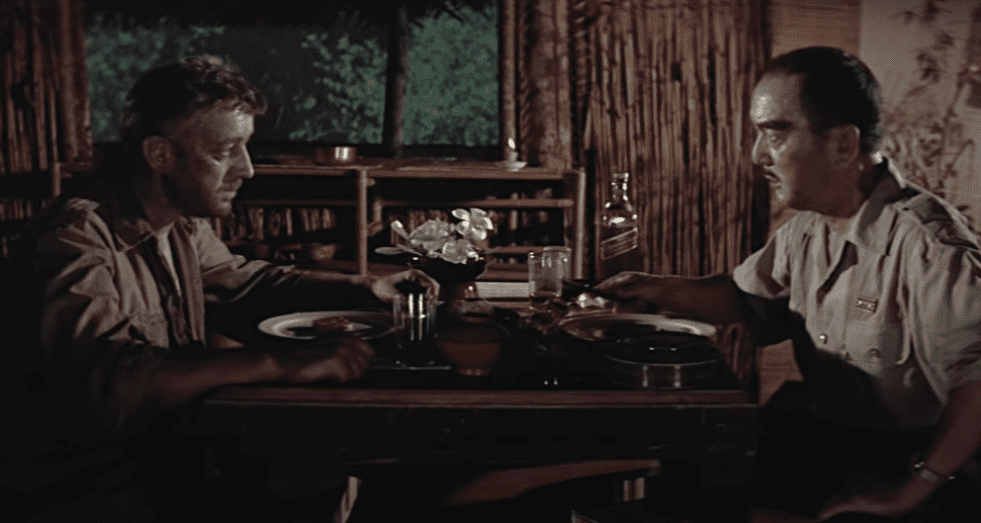 The Bridge on the River Kwai (1957), Columbia Pictures
The Bridge on the River Kwai (1957), Columbia Pictures
36. He Kept Himself Ignorant
Hayakawa earned his success by hook and by crook, and he was forced into heartbreaking acts to keep his sanity in Hollywood. Tearing up his script may have been one of those acts. Since he edited out all the dialogue, Hayakawa consequently knew very little about his character’s inevitable death. After all, Saito was a villain, and Hayakawa must have had enough of being vanquished.
37. His Own Country Despised Him
For all that Hayakawa was the first actor of Asian descent to become a superstar in the United States, his relationship with his native country was a tragedy. Because of his reputation for playing villains—the only roles Hollywood would give him—Japan thought Hayakawa was doing a dishonor to his people, and this reputation still clings to his memory there.
38. He Performed For A Distinguished Guest
Hayakawa may be shamefully half-forgotten in today’s cinema, but rest assured that the movie-going world knew his name back then. In 1930, he performed in the one-act play Samurai, which was written specifically with him in mind, in front of King George V of Great Britain and his wife Queen Mary. Now how’s that for superstardom?
39. He Had A Hidden Talent
While trapped in France during WWII, Hayakawa found a strange way to make ends meet. Always a skilled and patient painter, he started selling his watercolor works rather than working on films. In his off time, he even helped members of the French-Japanese community survive the lean years. Still, some people say he had more dangerous endeavors during this time…
40. He May Have Been A Spy
There is some evidence that when Hayakawa posted himself up in France, he wasn’t just idly helping his fellow Japanese citizens. Instead, certain historians have claimed that he was part of the underground French Resistance that helped eventually throw off the German stranglehold on the country. Hayakawa denied he did any such thing…but then again, a spy would say that.
41. He Had A Strange Acting Method
Hayakawa was a bit of an acting genius, and he took a specific and little-used approach to his craft. Instead of hamming it up with exaggerated gestures and emotions, he applied an understated, Zen approach to his scenes, which he identified as “muga” or “absence of doing.” The approach gave the matinee idol an unusually modern flare.
42. He Went Out With A Bang
Despite the fact that Colonel Saito was yet another villain role for Hayakawa, he considered the part the highlight of his career. It was also one of his very last roles; after The Bridge on the River Kwai came out, Hayakawa almost completely retired from acting. Old Hollywood superstars always did know how to keep us wanting more.
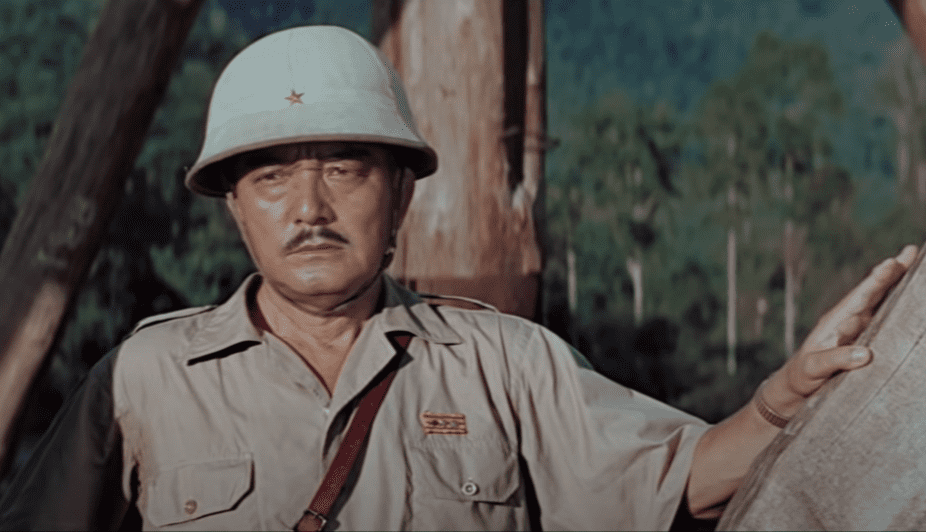 The Bridge on the River Kwai (1957), Columbia Pictures
The Bridge on the River Kwai (1957), Columbia Pictures
43. He Hurt His Co-Star
When Hayakawa went for it, he really went for it. During one scene in The Bridge on the River Kwai, his character Colonel Saito hits Colonel Nicholson, played by Alec Guinness, hard enough to draw blood. This was no movie magic, either. Hayakawa got so into the scene, he accidentally injured his co-star, and Guinness had to push through the pain to still get the take.
 The Bridge on the River Kwai (1957), Columbia Pictures
The Bridge on the River Kwai (1957), Columbia Pictures
44. He Made Fun Of Himself
Despite Hayakawa’s typecasting as a brooding villain, the only thing wicked about him was his sense of humor. In the 1958 Jerry Lewis comedy The Geisha Boy, Hayakawa parodies his own turn as Colonel Saito, playing a man obsessed with building a small bridge in his garden who later says people often confuse him for “the actor,” but that "I was building bridges long before he was."
 The Geisha Boy (1958), Paramount Pictures
The Geisha Boy (1958), Paramount Pictures
45. He Was Forbidden
Though Hayakawa once said, "My one ambition is to play a hero,” it was actually illegal during most of his fame for him to do just that. With anti-Japanese sentiment in the air and classic garden-variety racism still rooted to the ground in Hollywood, the infamous Production Code prevented Hayakawa from playing a romantic lead who had a relationship with someone of a different race, limiting his opportunities.
46. He Lied About His Origins
Hayakawa’s beginning—from his boisterous college boy ways to his reluctant stardom—is one of the legendary origin stories of Hollywood. But the truth may be much different. Film scholar Daisuke Miyao claims that Hayakawa, far from being an angry jock had a passion for the stage, instead deliberately finagled his way to California through a series of odd jobs, only taking up acting as a temporary distraction. Yeah, that’s not as romantic.
47. He Underwent A Transformation
Hayakawa had a hidden side that contrasted with all the glitz and glamour of Hollywood. Believe it or not, He was actually a practitioner of Zen Buddhism throughout his life. Like everything he did, Hayakawa ran full tilt into this pursuit as well, becoming a Zen master later in his life and even opening up a Zen temple for his students.
48. He Coined A Famous Term
With his sharp, expressive face and brows, it’s no wonder Hayakawa attracted audiences—but his beauty actually became a literal ideal. His acting work, particularly in The Cheat, helped French film critics come up with the term photogenie for the aesthetic way film footage shows off the features of its stars. Basically, Hayakawa was the OG “photogenic” film star.
49. He Was An International Star
Hayakawa had admirers in very high places, but also in far-flung locations. The French were obviously particularly obsessed with him, but he also gained a famous fan in the Soviet world. Iconic director Sergei Eisenstein called Hayakawa one of America’s “wonderful actors” along with screen stars Mary Pickford, William S. Hart, and other fine company.
50. He Was A Forgotten Star
Hayakawa met an eerily still end that belied the frenzy of his fame. After his wife Tsuru Aoki passed in 1961, Hayakawa continued on for a decade more, occasionally teaching acting classes and developing his Zen studies. Then, on November 23, 1973, he followed his wife, passing of a cerebral thrombosis in his 80s. May we remember this forgotten star once more.





